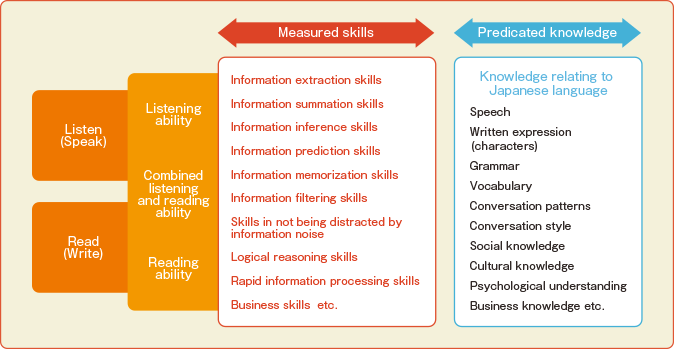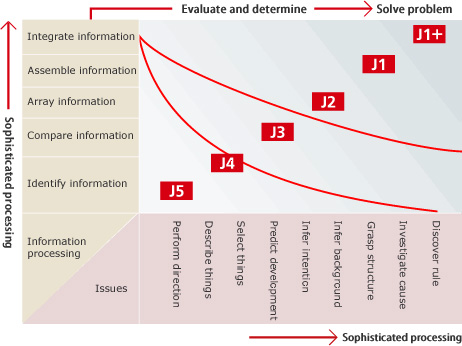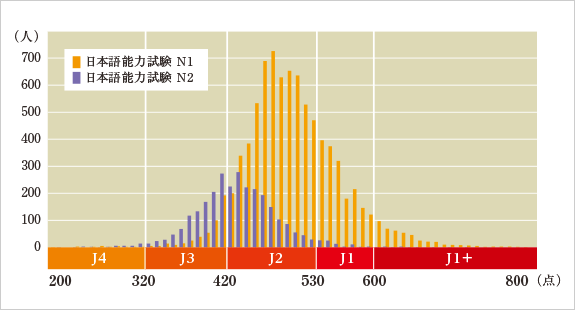Features of the BJT
A highly precise test designed by experts in various fields
The BJT's high level of precision has been maintained through the continual efforts of experts in Japanese language education, linguistics, statistics and other fields, as well as professionals in business world, who help develop the BJT through ongoing discussions of the test itself, methods of scoring, etc.
Abilities tested by the BJT
The BJT is not simply a test for measuring Japanese or business knowledge. The test assumes a basic knowledge of Japanese and objectively measures the ability to process and respond appropriately to provided information. For that reason, the questions cover the full range of situations which may arise in a Japanese-language business environment.

Knowledge of Japanese grammar and vocabulary and business practices is regarded as premise knowledge. The main objects of measurement are the ability to process information and business skills.
Three-part test measures overall proficiency.

Scaled score produces highly reliable results.
A single response to each multiple-choice question (with four options) is marked on an answer sheet. The results are evaluated not merely as raw scores (i.e., 1 point for each question), but calculated through statistical processing of raw scores based on item response theory (IRT). The data is processed with a conversion equation that enables the final result to reflect the difficulty of each question.Known as "scaled score," this is a highly precise internationally recognized method.
The greater the complexity of information processing, the higher the score.
Communication in business situations is performed successfully through the parallel processing of various information streams. The BJT is designed to award higher scores in proportion to the volume and difficulty of the information processing required for communication.

Communication is regarded as the performance of the information processing tasks listed on the vertical axis, through evaluation and judgment of information, as required for each task listed across the horizontal axis.
Comparison to the Japanese Language Proficiency Test (JLPT)
A questionnaire survey of BJT examinees found that people who passed the N1 had higher average scores on the BJT than those who passed the N2—confirming some degree of correlation. However, among those who passed the N1, scores were distributed widely in the range of 300–700 points. This demonstrates a broad distribution in their ability to use Japanese in business settings. This is because despite possessing basic competency, there are differences in practical skills. The BJT is a test that can measure these practical skills.
Relationship between scores of examinees from the 22nd–33rd BJT and levels obtained on the JLPT

BJT examinee scores
What is the BJT?
Test results Score ctertificate reissuance























